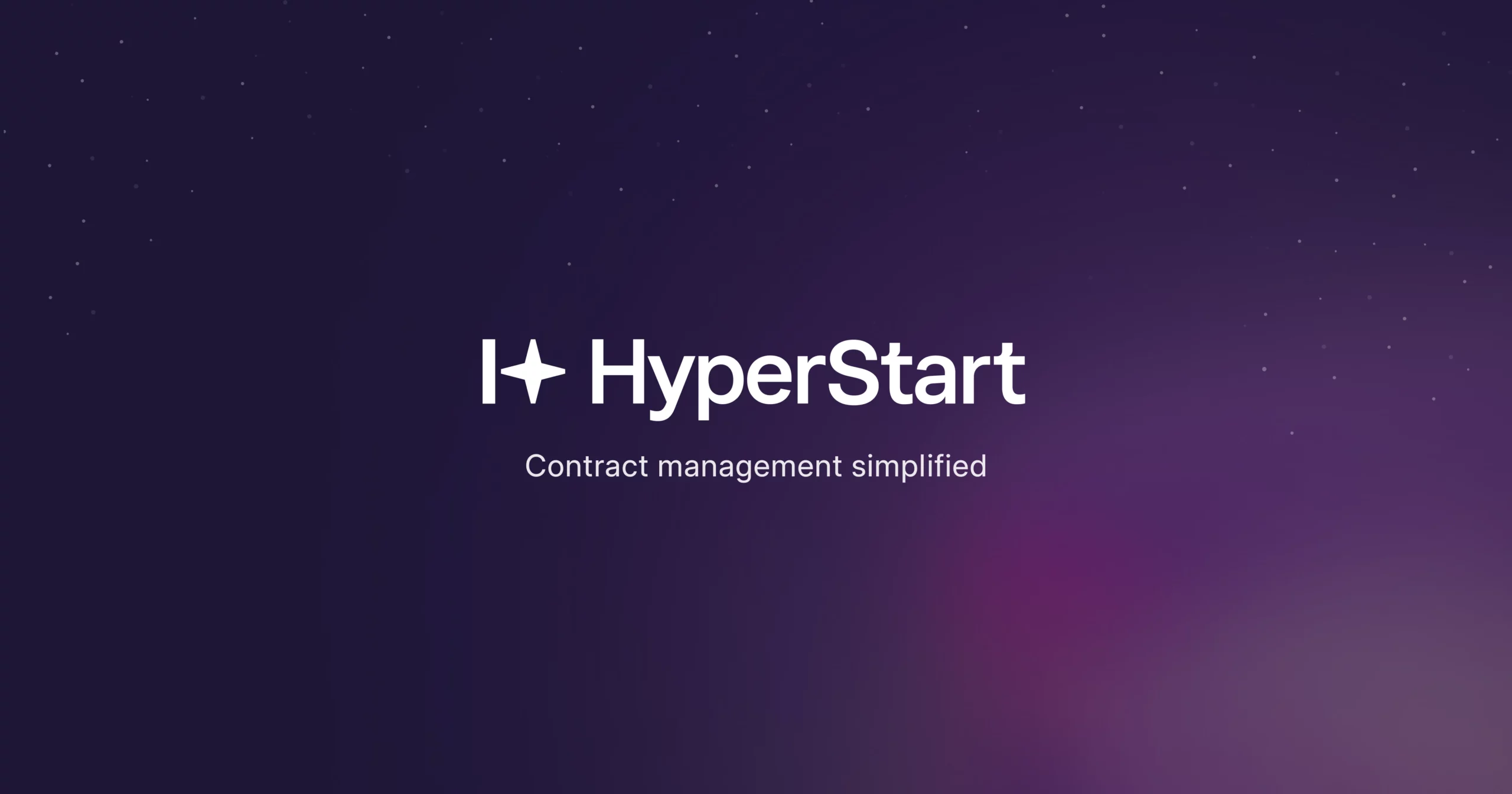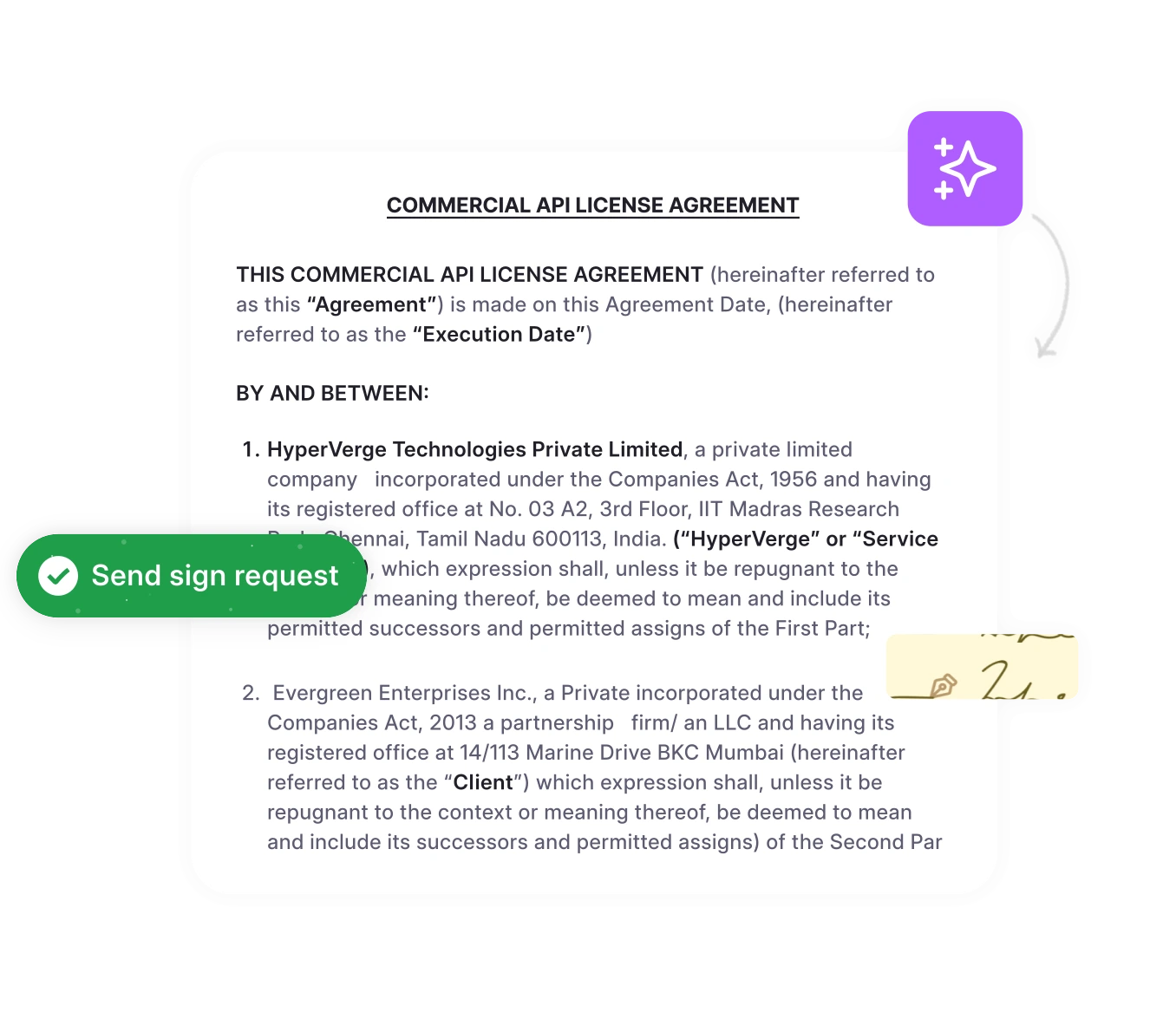Your legal team just received another NDA for review. The familiar cycle begins: clause-by-clause analysis, internal discussions, redlining rounds, and weeks of back-and-forth negotiation. Sound familiar? Enter OneNDA: the world’s first standardized NDA template designed to eliminate the endless back-and-forth that consumes legal operations time.
From startups to Fortune 500 companies like PwC, UBS, American Express, and Bosch, thousands of organizations now use the OneNDA standard template to streamline their NDA processes.
But is OneNDA the legal operations game-changer it promises to be?
This comprehensive guide examines how standardized NDAs transform legal workflows, addresses common concerns, and shows how modern contract management platforms amplify OneNDA’s benefits.
What is OneNDA?
OneNDA is a crowd-sourced, open-source non-disclosure agreement created by the global legal community specifically to address “NDA fatigue” in legal operations.
Unlike traditional NDAs that require extensive customization and negotiation, OneNDA provides a pre-approved template with standardized terms that legal teams can deploy immediately. The template identifies specific variables that change between agreements, eliminating the need to draft and redraft entire documents.
The core concept is simple: If everyone agrees to use one identical NDA template, how much time, money, and hassle would businesses save by starting from the same point?
The legal operations problem OneNDA solves
Traditional NDA processes create several operational bottlenecks that legal teams know all too well:
- Review time: Each custom NDA requires 2-4 hours of legal review
- Negotiation cycles: Back-and-forth redlining extends timelines by weeks
- Administrative burden: Legal teams spend up to 60% of their time on routine NDA reviews
- Business delays: Sales and partnership deals stall while waiting for NDA completion
Businesses, especially in sectors driven by fast-paced innovation and cross-company collaborations, found themselves mired in endless negotiations over NDAs, often before any real work could commence.
Knowing the concept is one thing, but seeing how OneNDA operates in real-world scenarios reveals its true potential. Let’s examine how it works in practice.
How does OneNDA work in practice?
The OneNDA framework revolutionizes the traditional approach through three key components:
1. Standardized core terms
Pre-negotiated clauses covering essential confidentiality obligations, developed through collaboration between leading law firms and in-house legal teams worldwide.
A major market study on NDAs found that 80% or more of M&A NDA negotiations create little meaningful benefit, highlighting huge inefficiencies. By adopting standard clauses where possible, OneNDA addresses this by minimizing unnecessary negotiation.
2. Variable cover page
Customizable fields for party details, governing law, and transaction-specific terms – the only elements that require completion.
3. Fixed template body
An unchangeable standard language that all parties accept, accelerating the contract negotiation phase. When both parties use OneNDA, there’s no negotiation required – just completion of the cover page variables and execution. The entire process reduces from weeks to days.
Automate NDA deployment in your existing workflow
HyperStart streamlines routine NDAs instantly while routing complex ones for review. See how teams cut turnaround time and reduce manual effort.
Book a DemoOnce you understand the workflow, it becomes easier to see the tangible benefits it delivers to legal teams and organizations.
What are the core benefits of OneNDA?
Adopting OneNDA transforms how legal teams handle NDAs, replacing slow, repetitive processes with a streamlined, standardized approach. Here are the top 3 benefits:
1. Achieve measurable time savings
Reviewing NDAs shouldn’t be a time drain. OneNDA’s standardized template removes the need for clause-by-clause analysis and back-and-forth edits, allowing business relationships to start without unnecessary delays.
2. Reduce legal costs significantly
Custom drafting and repeated reviews add unnecessary expense, especially for smaller businesses with tight budgets. By standardizing NDAs, OneNDA reduces legal processing time and eliminates redundant work, leading to substantial cost savings.
Success is ultimately measured by how much cost and time oneNDA has saved for companies. But this is a really hard metric to pin down, due to variations in legal team size and contract volume; nevertheless, qualitative feedback and increasing adoption rates signal measurable gains in efficiency and cost control.
3. Refocus legal teams on high-value work
With routine NDA reviews off their plate, legal professionals can focus on strategic priorities—like complex negotiations, contract compliance tracking, and partnership development—rather than administrative tasks. This boosts productivity and strengthens the legal team’s role as a business growth partner.
The goal is clear: reduce your workload and get your time back so you can focus on the more strategic work that matters to your business most.
Despite its advantages, implementing OneNDA isn’t without hurdles. The most common challenge often surprises legal teams.
What is the most common OneNDA implementation challenge?
The primary implementation challenge centers on a fundamental question: When is OneNDA appropriate for your specific transaction?
As OneNDA’s creators acknowledge: “They suggest the user will need to assess whether the NDA is appropriate for a particular transaction. Practically speaking, just like an in-house NDA template, in-house legal will still need to decide if one NDA is appropriate for a transaction.”
When OneNDA Works Best
OneNDA is designed for typical scenarios where two parties enter into standard commercial discussions:
- Early-stage business conversations
- Vendor and supplier discussions
- Partnership and collaboration talks
- Standard commercial relationships
- Technology and innovation partnerships
When to Consider Alternatives
For complex situations, legal teams should evaluate whether OneNDA provides adequate protection:
- M&A discussions and due diligence
- Highly sensitive intellectual property sharing
- Multi-party complex arrangements
- Heavily regulated industry requirements
- Situations requiring enhanced protection for one party
Cut NDA review time in half
Automate OneNDA checks to detect exceptions, maintain accuracy, and speed up deal closures.
Book a DemoUnderstanding the challenge is the first step—overcoming it requires a structured approach to successful adoption.
How to implement OneNDA in your legal operations
Overcoming adoption barriers requires a structured rollout. By following these three implementation steps, legal teams can integrate OneNDA into daily workflows with minimal friction.
Phase 1: Assessment and planning
Evaluate Current NDA Volume
- Calculate the time spent on NDA reviews annually
- Identify patterns in negotiation delays
- Document stakeholder frustrations with current timelines
Build Internal Buy-in Position OneNDA as an efficiency improvement rather than a cost-cutting measure:
- Demonstrate time savings for strategic legal work
- Show market adoption by industry leaders
- Emphasize improved business partnership velocity
Phase 2: Strategic implementation
- Modify contract request processes to default to OneNDA for appropriate transactions
- Create decision criteria for OneNDA vs. custom NDA selection
- Establish clear approval workflows for OneNDA deployment
Update Legal Workflows
Stakeholder Education
- Train business teams on OneNDA benefits and positioning
- Develop talking points for external parties
- Position as industry standard: “It provides you with leverage because it’s not’ your’ form; it’s a market standard.”
Phase 3: Technology integration
Modern contract management platforms significantly enhance OneNDA effectiveness:
Template Management
- Centralized OneNDA template storage and version control
- Automated deployment based on transaction type
- Integration with CRM and business systems
Workflow Automation
- Trigger OneNDA requests based on predefined business needs
- Route for appropriate approvals without manual intervention
- Electronic signature integration for immediate execution
Performance Tracking
- Monitor time-to-signature improvements
- Track cost savings and efficiency gains
- Generate reports on adoption and business impact
Even after implementation, concerns may arise around compliance, flexibility, or enforceability. Here’s how to address them proactively.
What are the common OneNDA concerns and their solution?
As with any legal innovation, concerns around flexibility, enforceability, and jurisdictional coverage can arise. Addressing these three issues upfront ensures OneNDA works effectively for your organization.
1. It doesn’t provide enough protection
Reality Check: OneNDA was developed with leading law firms and in-house teams worldwide. It provides fair, straightforward terms covering essential obligations without unnecessary complexities.
The agreement includes key obligations without unnecessary or overly onerous terms. For details on excluded terms and rationale, the community maintains a comprehensive “Graveyard Document” explaining decisions.
2. External parties who reject
Market Adoption: Over 3,000 organizations globally across various industries now use this template. Major companies, including Coca-Cola, Bupa, UBS, Revolut, EasyJet, Cazoo, and Panasonic, have adopted OneNDA.
Positioning Strategy: Present OneNDA as an industry movement rather than your company’s preference. The growing adoption creates network effects – the more organizations that adopt it, the easier the implementation becomes.
3. Our business teams want custom terms
Educational Approach: Demonstrate the efficiency gains and business velocity improvements. Reserve custom NDAs for genuinely high-risk scenarios while using OneNDA as the default for standard commercial relationships.
Standardize NDAs without losing control
Use HyperStart’s AI to quickly review, approve, and track OneNDA agreements while ensuring compliance with your policies.
Book a DemoResolving current challenges opens the door to exploring where OneNDA—and the broader movement toward standardized legal documents—is headed in the coming years.
Automate OneNDA with contract intelligence
OneNDA works best when it’s deployed intelligently—applied to routine transactions while reserving custom agreements for complex, high-risk deals. Manual processes and inconsistent usage often slow legal teams down and expose them to unnecessary risk.
Legal teams that get the most out of OneNDA focus on smart deployment, quick setup, and precision. The key challenge isn’t whether you use it—it’s how efficiently and intelligently you implement it. With contract intelligence software, legal teams reduce NDA turnaround time, eliminate bottlenecks, and focus on higher-value legal work instead of repetitive processing.










